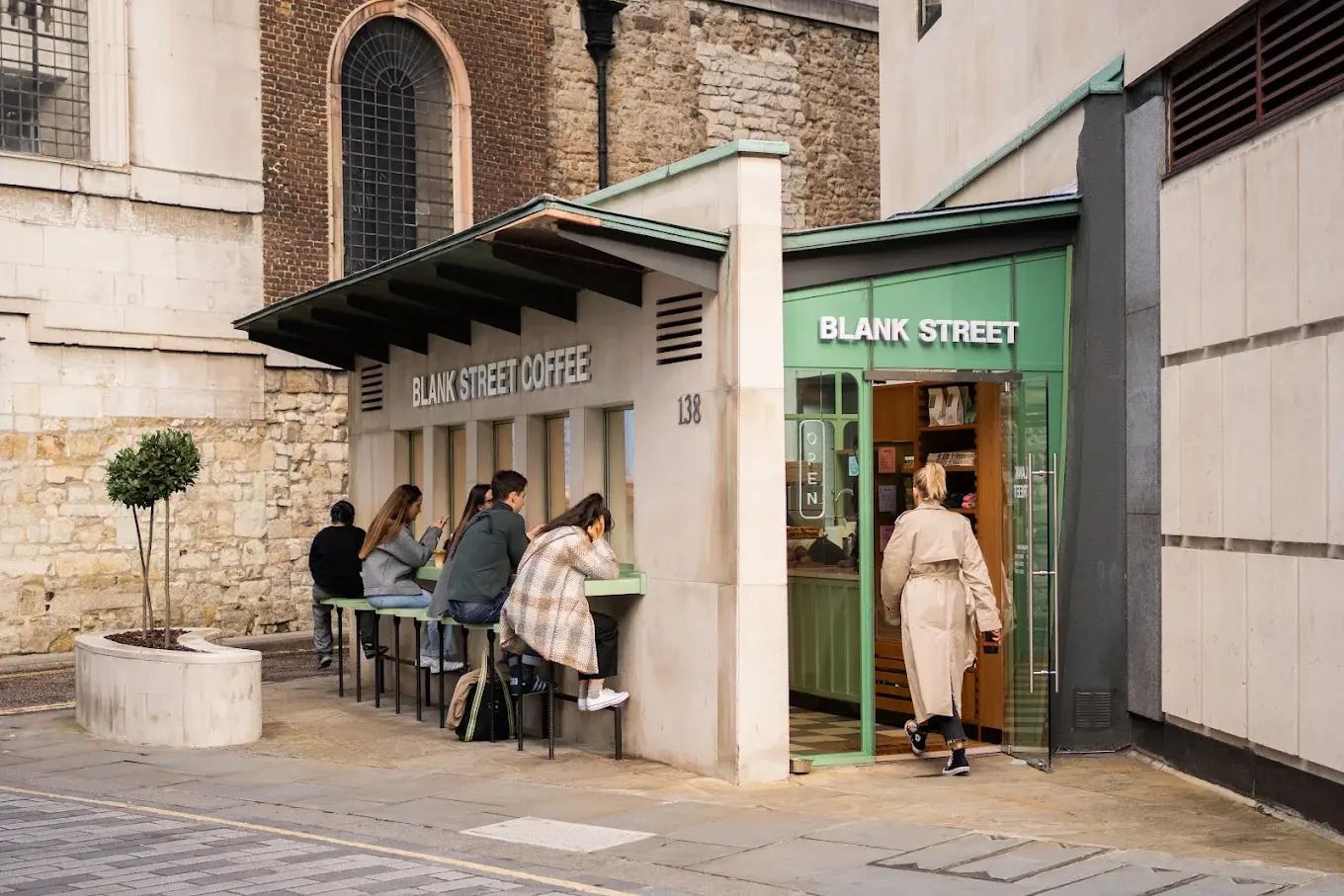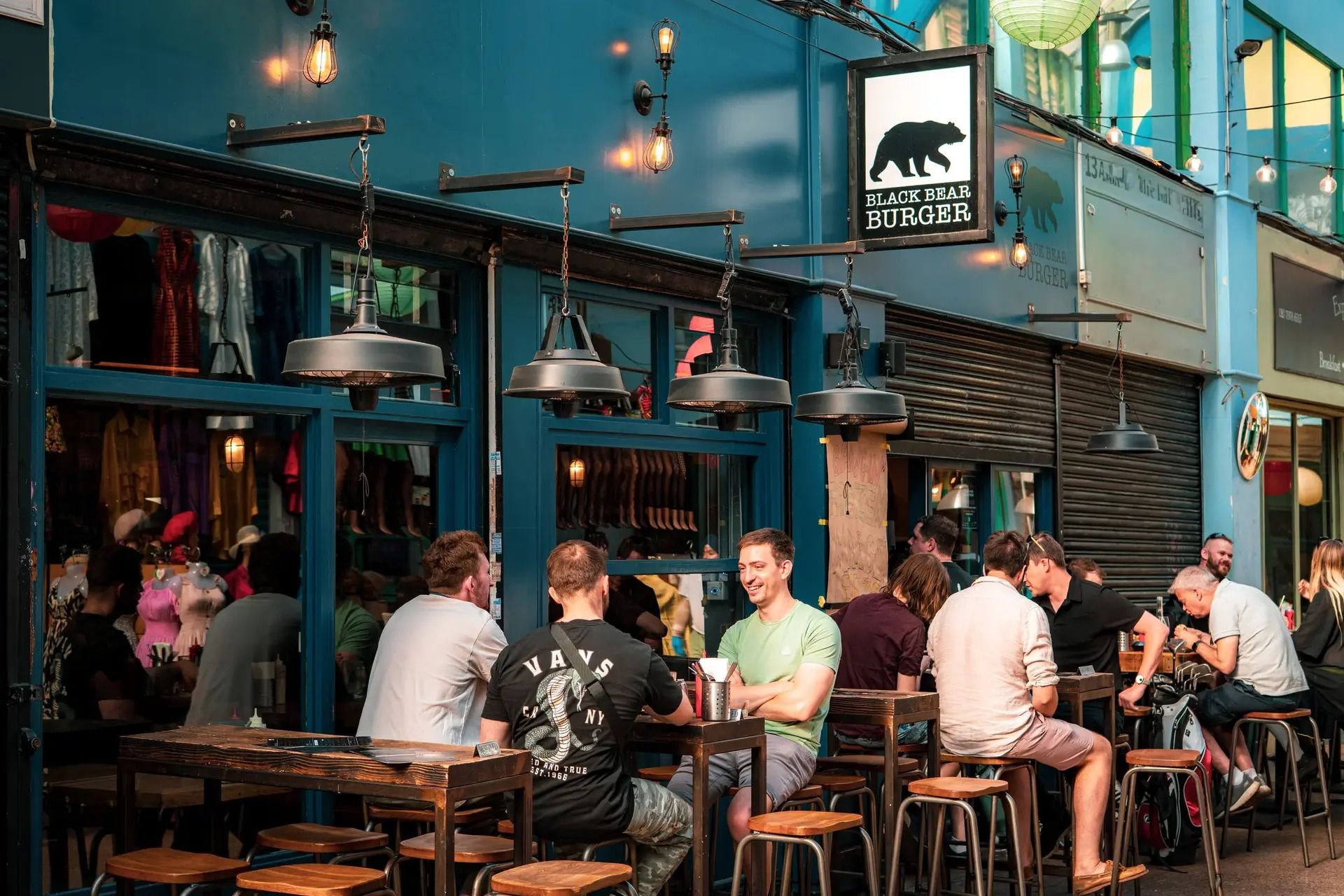- Hot Potato
- Posts
- How Two Brands Built Empires by Getting Smaller, Not Bigger
How Two Brands Built Empires by Getting Smaller, Not Bigger

Hey Hot Potatoes,
Welcome to the latest edition of the Hot Potato Newsletter! Cor blimey, for my UK friends out there, its certainly taken a dip in temperature, winter has firmly arrived!
And just like the weather, the hospitality landscape is shifting dramatically. While traditional restaurants were supersizing their dining rooms and building out 5,000+ square foot spaces, a coffee chain operating from 350-square-foot holes-in-the-wall has hit a £400 million valuation.
We're talking about coffee brands generating similar revenues from spaces one-fifth the size of Starbucks and burger operations scaling to seven locations without ever signing a traditional standalone lease. The correlation between square footage and profitability has been completely severed.
In today's newsletter we ask: Does this "smaller is more profitable" revolution work beyond grab-and-go, or are we witnessing a fundamental split in hospitality economics? We'll decode Blank Street Coffee's 350-square-foot model that's conquered four cities and reveal how Black Bear Burger scaled to seven locations by strategically leveraging food halls and markets instead of traditional restaurant economics.
In today’s email: How Two Brands Built Empires by Getting Smaller, Not Bigger
Read Time: Approx 4-5 mins
Why Shrinking Your Footprint Actually Multiplies Revenue: The Economics That Change Everything
Source: Gourmet Marketing / Caterer
Before we dive into the case studies, let's challenge the myth that bigger locations mean bigger profits. Three data points prove the opposite is true.
Key Points:
Micro-formats deliver 3-4x higher revenue per square foot: Traditional coffee shops generate £300-800 per square foot annually, while kiosk-focused models achieve up to £1,300 per square foot. Crucially, Blank Street Coffee's 350-500 sq ft locations can generate similar absolute revenue to traditional cafés five times their size, while traditional restaurants struggle with 5,000+ sq ft leases eating 15-20% of revenue before serving a single customer.
The rent revolution is real: Micro-format operators pay £1,500 - 3,500/month versus £10,000-15,000 for traditional central cafés, while operating with 1-2 staff instead of 5-6. The big bonus: reduced fixed costs mean operators can invest more heavily in other areas of the business like marketing and technology to supercharge growth.
Kiosks and food halls democratise prime locations: Global kiosk installations jumped 43% from 2021-2023 to 350,000 units and are projected to double by 2028, while UK food halls grew from 19 to 42+ in under a decade. The self-service kiosk market alone hit £37.2 billion in 2025, growing at 10.9% annually. Operators can now test concepts in food halls with much less risk attached than standalone sites.

Market Halls in Victoria
Blank Street Coffee: When 350 Square Feet Outperforms 2,000
Vinay Menda and Issam Freiha started Blank Street with a 5x10-foot coffee cart in Brooklyn during August 2020. Now, with a £400 million valuation and 90+ locations across four cities, they've proved that radical space optimisation beats traditional café economics every time.
The Strategy – Technology enables tiny footprints:
While most coffee shops were designing 1,000-2,000 square foot spaces, Blank Street took the opposite approach. Their stores average 350-500 square feet – about one-quarter the size of a typical Starbucks. The secret? Investing £50,000 in Eversys Shotmaster Pro espresso machines that produce 700 espressos per hour. "We can go where others can't," explains the operational model. Their small footprint provides access to spaces traditional operators simply can't utilise – former retail corners, transport hubs and converted carts.
The Results – Profitable from location one:
Blank Street's first 14 locations were profitable from the start. Their UK operation saw 517% revenue growth in 2023 to £11.4 million. They've deployed across NYC, London, Boston and Washington DC, with mobile ordering already hitting 20% of transactions.
Reduced staff count and rent vs. traditional sites mean reduced costs, allowing them to be more competitive on pricing. By keeping drink prices 20% below Starbucks (£2.75-5) while maximising throughput, they've engineered a high-volume, high-efficiency model that generates revenue per square foot that traditional cafés simply cannot match.

Blank Street in St Pauls
Black Bear Burger: From Broadway Market Stall to Seven London Locations Without a Single Standalone Unit
Instead of building traditional restaurants, Black Bear Burger scaled to eight London locations by strategically leveraging food halls, markets and multi-vendor spaces, proving you don't need standalone units to build a burger empire.
The Strategy – Grow through shared infrastructure:
While most burger brands were signing expensive leases for standalone restaurants, Black Bear Burger took a radically different approach. They started selling burgers every Saturday at Broadway Market, cycling to the local butcher on Friday lunchtimes to pick up beef for grinding and forming into patties. After building popularity through residencies at Street Feast and KERB, they opened their first permanent location at Boxpark Shoreditch in 2016.
The brand then expanded to Market Halls locations (Victoria, Canary Wharf), Exmouth Market, Brixton Village and most recently Boxpark Camden. Their current portfolio includes three standalone restaurants (Brixton, Westfield and Exmouth Market) and five locations within shared food hall and market spaces. Even their "standalone" restaurants benefit from the foot traffic of established market areas.
After appearing on BBC's Million Pound Menu in 2018, they opened their first sit-down restaurant in Brixton Village in 2019, then rapidly expanded. In 2023, Black Bear Burger launched spin-off concept 20ft Fried Chicken at Market Halls Oxford Street, further proving the food hall model's viability for testing new brands.
The Results – Multiple sites without traditional restaurant economics:
The economics are compelling: operating within existing infrastructure means no massive build-out costs, shared utilities, built-in foot traffic and the ability to test new locations with minimal risk. Market halls only charge rent as a % of turnover, so hypothetically if they did no sales, they would pay no rent, significantly lowering their risk.

Black Bear Burger in Brixton Village
Traditional restaurants spend fortunes on 5,000 square foot build-outs and eye-watering rent, then struggle to fill seats during off-peak hours. Meanwhile, Blank Street Coffee, Black Bear Burger and kiosk operators are achieving 3-4x higher revenue per square foot with a fraction of the overhead, better labour efficiency and faster deployment timelines.
If you were launching a new food concept, what approach would you take to finding your first site?
Now, speaking of brands that are completely redefining their industries through unexpected moves... in our penultimate newsletter of the year, we’re going to shine a spotlight on Michelin-starred chefs who have taken the fast casual scene by storm. Leaving behind the world of stars for street food, we will take a look into the chefs and the brands they have created. While traditional fine dining wrestles with £200+ tasting menus and skeleton staffing, these chefs are applying Michelin-level technique to high-volume formats, proving that exceptional food and accessible pricing aren't mutually exclusive.
In our next edition, we'll explore which starred chefs have made the leap (and which concepts are actually working), how they're adapting fine dining techniques for speed and volume without sacrificing quality and whether this represents a permanent shift in how culinary talent builds businesses or just a temporary trend capitalising on casual dining's premium moment.
Ready to discover how Michelin technique is reshaping the £12 lunch? Subscribe now for our exclusive look at the chefs trading stars for street cred.
Bon appétit,
Max Shipman, Founder, Hot Potato
P.S. Don't forget to add us to your safe senders list to ensure you don't miss out on any of our tasty content.